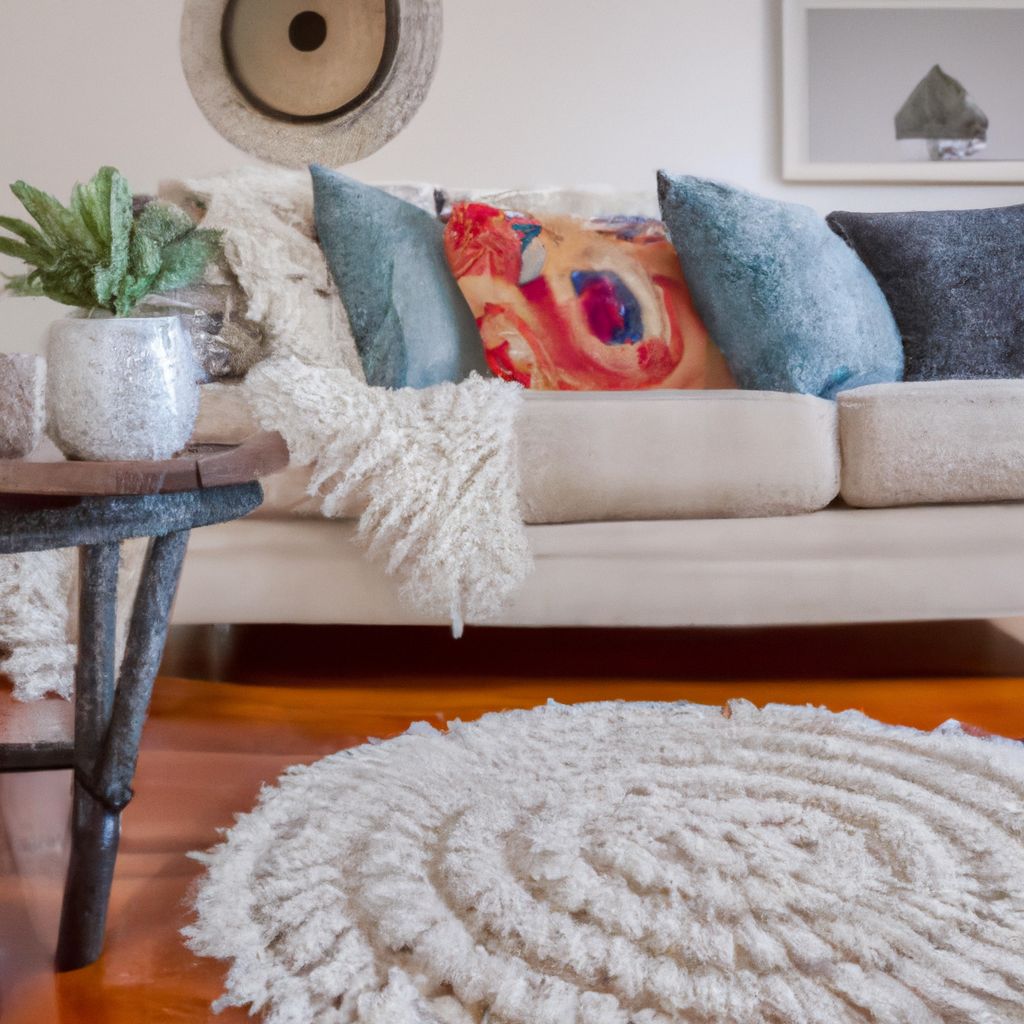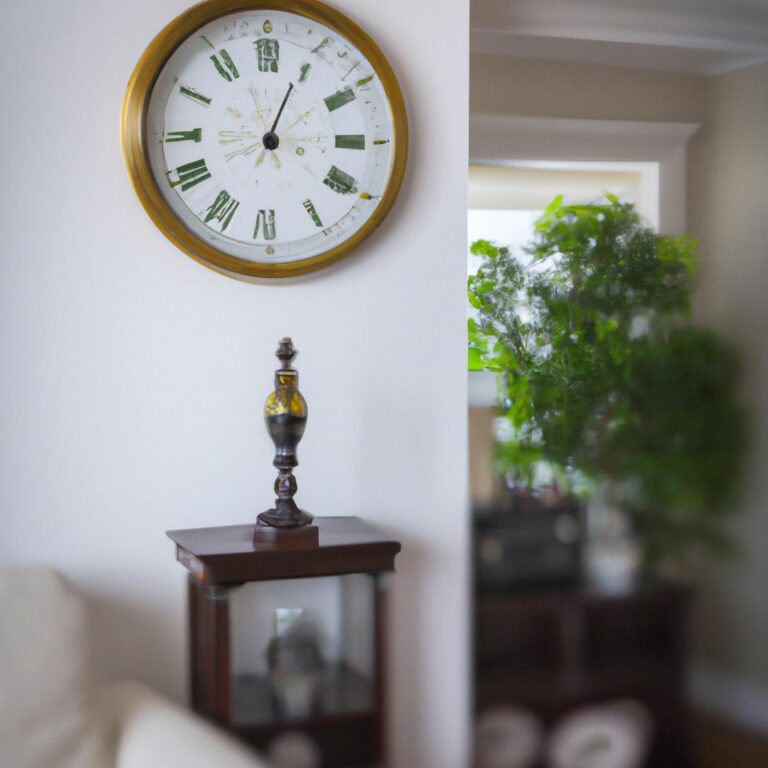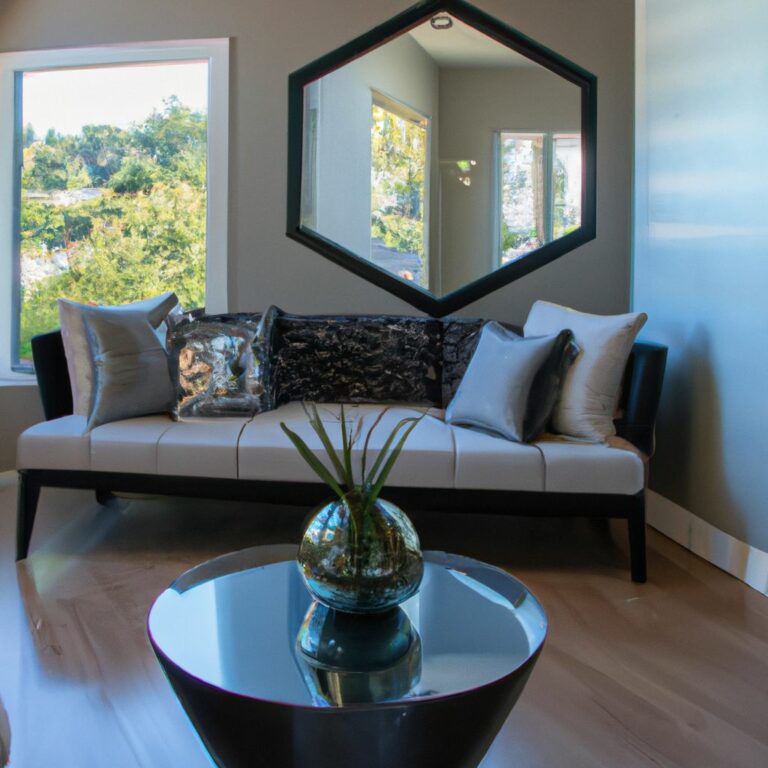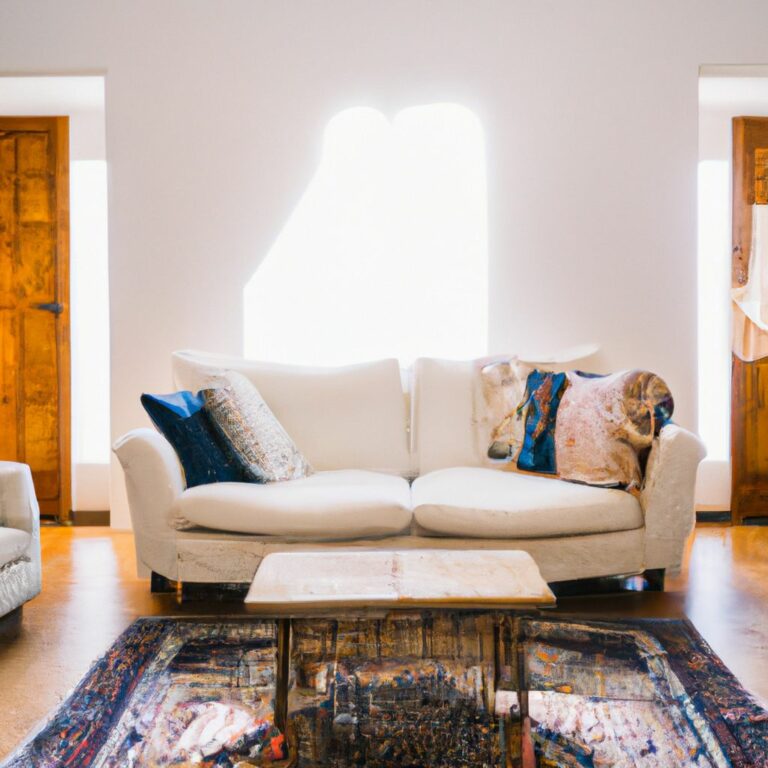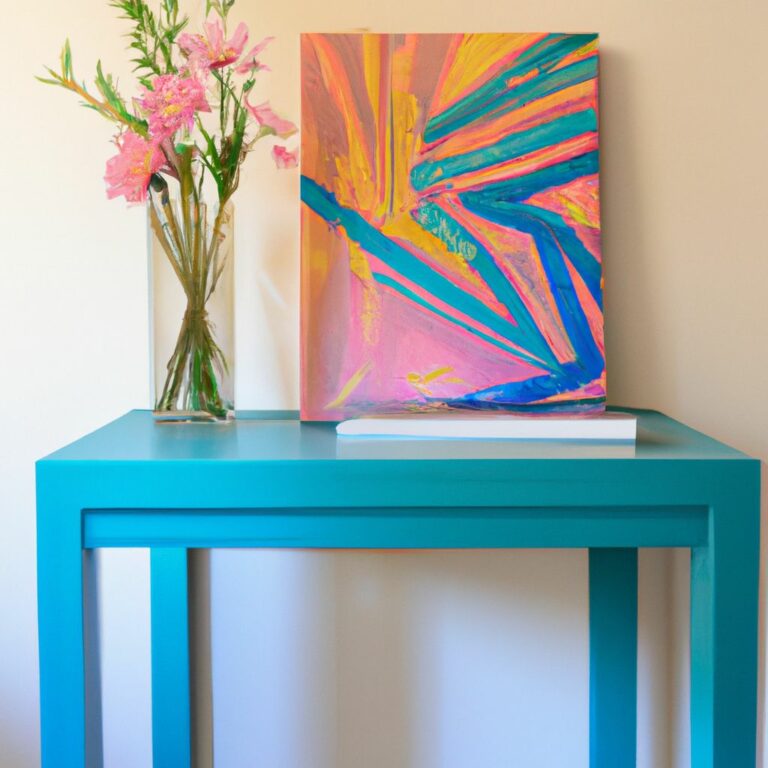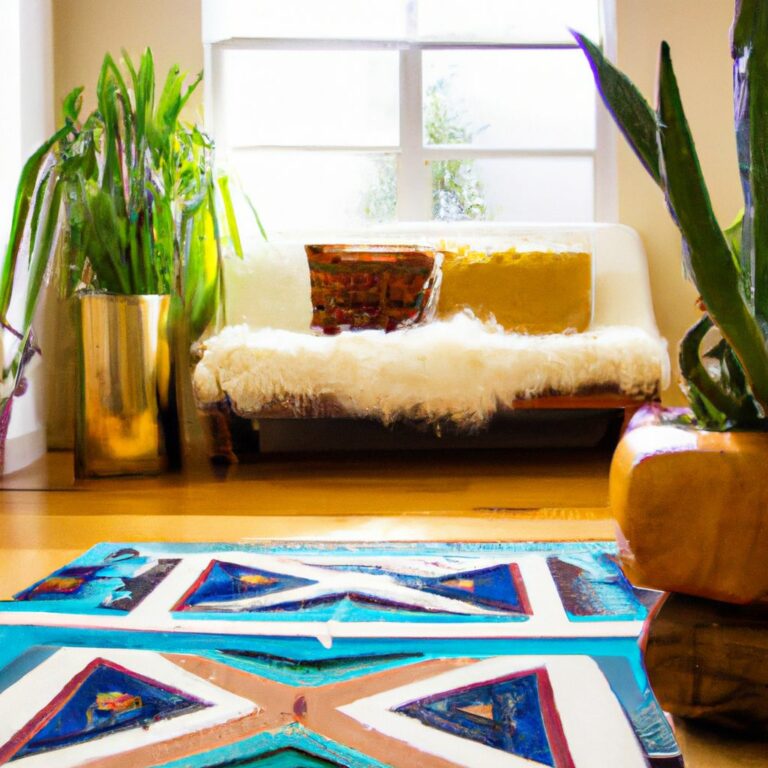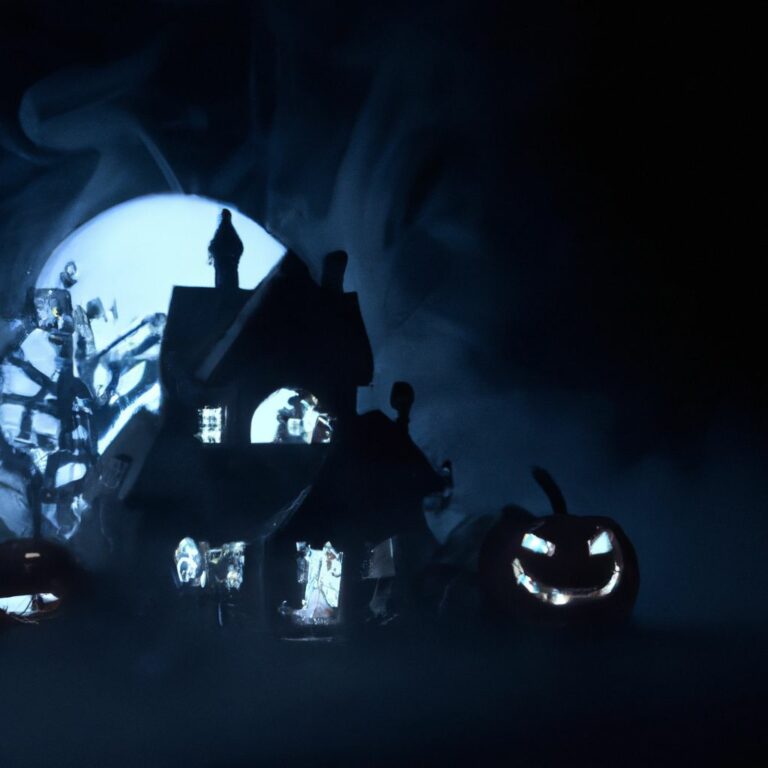Why Mixing Textures in Home Decor Matters
To achieve a well-balanced and visually appealing home decor, embrace the concept of mixing textures. With the benefits of mixing textures in home decor, such as adding depth and interest, we explore how this approach can transform your living space into a haven of style and sophistication.
Benefits of Mixing Textures in Home Decor
Mixing textures in home decor can bring a fresh, invigorating vibe to your living space. Not only does it add visual interest, but also a dynamic and layered atmosphere that is both visually appealing and inviting.
It adds depth and dimension, enhances visual appeal, creates balance, adds tactile sensation, showcases personal style and highlights key elements. Moreover, mixing textures gives you the freedom to experiment with different design styles without committing fully.
So, start exploring different materials, fabrics, finishes, and patterns today! Transform your living space into a visually captivating haven reflecting your unique style and taste. Don’t let the fear of missing out on this exciting design trend hold you back – step out of your comfort zone and embrace the world of mixed textures in home decor! It’s like adding spice to a dish – it adds depth and interest, turning a plain space into a flavorful sensory experience.
Different Types of Textures in Home Decor
To create a visually appealing home decor, mix different types of textures. Incorporate natural textures, textured fabrics, and metallic textures. Each of these sub-sections offers a unique solution to enhance the overall aesthetic of your living space.
Natural Textures
Wood is a popular choice; it adds warmth and richness to any room. Hardwood floors, exposed ceiling beams – these create a cozy and rustic atmosphere. Stone is another option; marble countertops, slate flooring, a stone fireplace – these bring elegance and sophistication. Plus, each piece is unique! Brick walls or veneers add a charming industrial or rustic vibe, plus texture and character.
Natural fibers such as jute, sisal, or seagrass in rugs, baskets, or wall hangings bring earthiness. Greenery like potted plants or succulents bring life and purify the air.
Other textures to consider include cork flooring for eco-friendly warmth and durability. Rattan furniture brings texture and an exotic flair.
Balance is key – too much of one texture can overwhelm, but a mix creates visual interest and harmony. With wood, stone, and plants, you can enjoy nature – without the bugs!
Incorporating Wood, Stone, and Plant Textures
Incorporating textures in home decor can bring depth and visual interest. Wood, stone, and plant textures are popular choices to bring a natural feel.
Let’s explore a table that shows the applications for each texture:
| Texture | Application |
|---|---|
| Wood | Adds warmth and richness |
| Stone | Provides an earthy and rustic touch |
| Plants | Bring a fresh and lively vibe |
By strategically adding these textures throughout your home, you can create a balanced atmosphere. For example, wooden flooring with stone accent walls can create a cozy yet sophisticated living room. Plants in hanging pots or on shelves can liven up any space.
It’s important to select textures that complement each other. Harmonizing different materials will create a visually appealing aesthetic.
Did you know that natural textures can have calming effects? A study by the University of Exeter found that being surrounded by wood and plants can reduce stress and promote feelings of well-being.
Consider adding wood, stone, and plant textures to your home decor. Create a serene sanctuary! But be careful not to confuse your guests with a couch that looks like it belongs in a geology museum.
Textured Fabrics
Add depth and visual interest to any home decor! Textured fabrics have the ability to transform a space. Let’s explore how they can enhance your living spaces.
Velvet – luxe and elegant fabric, best for upholstery and drapery.
Suede – smooth and velvety, best for sofas and chairs.
Linen – lightweight with subtle texture, best for curtains and pillows.
Burlap – coarse and rough, best for table runners and wall hangings.
My friend once redecorated her living room using textured fabrics. She chose a deep purple velvet sofa with burlap throw pillows for contrast. The result? A stunning space with elegance and warmth.
Imagine what textured fabrics can do to your home decor. Experiment with different textures to create personalized spaces that reflect your style. Let your guests experience the tactile sensation of the fabric – just don’t let them take it away!
Using Different Textured Fabrics in Home Decor
Introducing textured fabrics to your home decor adds depth and personality. You can make it reflect your style and taste with varying textures such as velvet, silk, linen, or faux fur. Mix and match different fabrics for contrast and interest. Accent pieces like throw pillows, curtains, or rugs can be great places to incorporate texture. Experiment with different patterns and weaves to further enhance the texture.
Textured fabrics offer a sensory experience and add depth and dimension to your design. Put velvet or faux fur blankets on a leather sofa for warmth and softness. Combine linen curtains with silk throw pillows on your bed for an inviting atmosphere. For more depth in a neutral-colored room introduce patterned textured rugs.
Transform your living space with textured fabrics to create a stylish oasis that shows off your personal style. Embrace the power of texture in home decor to elevate the ambiance of your space, and don’t forget the glamour of metallic textures!
Metallic Textures
Metallic textures add a touch of elegance and sophistication to home decor. Shine, shimmer and glamour – explore popular textures and how they can enhance your space! Polished brass for a luxurious look, brushed nickel for a muted silver texture, copper patina for a greenish-blue oxidized surface.
Antiqued bronze provides a vintage, rustic feel. Mix different textures for striking visual contrast and depth. Incorporate metals strategically – polished brass fixtures in the bathroom, brushed nickel accents in the kitchen, copper patina wall art in the living room.
Balance the shine with other elements like wood and fabrics. Proper lighting is key to highlighting metallic textures. With the right mix, your home decor will be golden…without the mine!
Adding Metallic Accents for Visual Interest
Adding Metallic Accents for Visual Interest is a great way to boost the look of your home decor. It brings a touch of sophistication and glamour! Here are some ideas to get you started:
- Mirrors – Hang an ornate mirror with a metallic frame to add elegance and make the room appear larger and brighter.
- Lighting – Choose pendant lights or lamps with metallic finishes to create a warm atmosphere and add a modern touch.
- Furniture – Incorporate furniture pieces with metallic elements, like brass legs or gold accents on coffee tables, for a luxurious feel.
- Accessories – Display metallic accessories like vases, candle holders, or picture frames to add shimmer and dimension to your decor.
To make the most of metallic accents, focus on one or two areas and pair them with contrasting colors or textures. Balance the elements across the space and take advantage of their reflective properties near light sources. This way, you can create a look that expresses your personal style!
How to Successfully Mix Textures in Home Decor
To successfully mix textures in home decor with creating balance and contrast, layering textures for depth and dimension, and harmonizing textures with color and pattern as solutions.
Creating Balance and Contrast
Bring balance and contrast to your home decor by combining different textures. Add sleek surfaces like glass or metal beside rough textures like reclaimed wood and textured fabrics. Soft materials such as velvet or faux fur should be combined with hard surfaces like marble or concrete. Mix organic elements, like plants or wood, with geometric patterns for visual stimulation. Incorporate light and dark tones for depth, and experiment with glossy and matte finishes for added texture and interest. Use fabrics with different weaves, such as herringbone, jacquard, or tweed.
Don’t forget to add metallic accents, natural elements, and bold patterns to your decor. My friend recently redecorated her living room with a mix of textures like leather, velvet, silk, and wood. She achieved a harmonious and unique look that truly transformed her home.
Balance and contrast through textures can elevate your home decor. No matter your style, incorporate textures to create a captivating and dynamic space. Embrace the power of texture and watch it transform your living environment into a masterpiece!
Layering Textures for Depth and Dimension
Layering textures in home decor is a great way to add depth and dimension to living spaces. Mix different materials, patterns, and fabrics to create visual interest and tactile appeal. Contrasting rough fabrics like linen or burlap with soft materials like velvet and faux fur adds an intriguing dynamic. To achieve texture variation, try combining geometric and organic motifs, or pairing bold graphics with subtle textures.
Furniture pieces and accessories can also bring in textured elements. Look for intricate carvings or unique architectural details. Decorative items like woven baskets, ceramic vases, and wooden sculptures can also add texture.
Strike a balance between complementary elements. Opt for a cohesive color palette that ties all the textures together. Studies show that incorporating texture into interior design has positive effects on our wellbeing. So start layering different textures in your home decor for a visually stimulating and inviting environment!
Harmonizing Textures with Color and Pattern
Text: Choose a color palette that fits the theme of your home. Consider the mood of each room and pick colors. Match different textures with various hues of the same color, or complementary colors.
When pairing textures, think of the scale. Have large-scale patterns and small-scale ones to keep the space from looking too crowded. Contrasting textures make depth and variety in decor. Mix smooth surfaces like glass or marble with rough-textured elements like baskets or faux fur.
Layer textiles like velvet or silk with materials like wool or linen to give a cozy feel. Additionally, consider lighting, furniture placement, and individual tastes.
I found it hard to mix textures in my living room. After studying up, I added textured throw pillows in vibrant colors against my neutral couch. This small change had a huge impact in balancing texture, color, and pattern. Even small changes can make a big difference in harmonizing textures in home decor. Have fun and create a sensory overload with these texture mixing tips!
Inspiration and Ideas for Mixing Textures in Home Decor
To achieve a well-balanced and visually appealing home decor, dive into the world of mixing textures. Discover inspiration and ideas for blending different textures in your living space. Explore case studies highlighting successfully mixed textures. Gain valuable tips and tricks from interior design experts. Engage in exciting DIY projects that incorporate textures. Find recommended products to enhance your textured home decor.
Case Studies of Successfully Mixed Textures in Home Decor
Glimpse real examples of successfully mixed textures in home decor! Combining different textures can create a visually appealing and cohesive look.
For instance, try Velvet and Leather, Rattan and Linen, or Wood and Metal. Select items such as a Sofa and Accent Chair, Dining Chairs and Table, or Coffee Table and Side Table.
Choose colors like Deep Blue, Black, and Brown; Neutral Tones with Pops of Green; or Natural Wood with Silver Accents.
These combinations offer exciting possibilities for home decor enthusiasts. With careful selection, one can achieve a harmonious blend that elevates design aesthetic.
Surprisingly, mixing textures in home decor dates back centuries. Ancient civilizations used woven fabrics, leather upholstery, ornate wood carvings, and metal accents to enhance interior design.
This timeless practice continues to inspire modern decorators to experiment with different textures, resulting in captivating living spaces. Ready to give your home a makeover? Try these texture tips!
Tips and Tricks from Interior Design Experts
Interior design experts have valuable knowledge and experience to share, which can help you create a beautiful and cohesive space. Here are some key points to remember when applying their tips:
- Color coordination: Choose colors that work together. Consider the mood and atmosphere you want to create in each room.
- Furniture placement: Place furniture in a way that adds to the flow and functionality of the room. Factor in the size, light sources, and overall aesthetic.
- Texture mixing: Mix smooth and rough textures for added depth. For example, pair a velvet sofa with a wooden coffee table.
- Accessorize thoughtfully: Pick items that fit your style and tie the room together harmoniously.
Pay attention to unique details, too! These hidden gems can add personality to your home decor.
Interior design has a long history with stories from cultures all over the world. From ancient Egypt and Rome to modern Art Nouveau and Mid-Century Modernism, it’s continually changing alongside societal changes. Get creative with DIY projects that will give your home texture and wow your guests!
DIY Projects to Incorporate Textures in Home Decor
DIY projects for home decor are becoming increasingly popular. Textures add a unique touch to any living space. Here are 6 ideas to get you started:
- Wood panels or brick veneers can create a beautiful, textured wall.
- Introduce woven elements with macrame wall hangings, rattan furniture, or a textured rug.
- Furniture can be reupholstered with luxurious fabrics like velvet or faux fur.
- Textured planters made from concrete or ceramic bring nature indoors.
- Bed linens can be layered with soft blankets, chunky knit throws, and plush pillows.
- Pendant lights with intricate designs or lampshades made from jute or bamboo can add texture to lighting.
For extra texture, try metallic accents with decorative objects or textured wallpaper. Unleash your creativity and transform your home decor with these awesome DIY projects!
Recommended Products for Textured Home Decor
For those wanting to add depth and character to their home, here are some recommended products! These textured pieces can elevate any space. Consider:
- Textured Wallpaper: Transform walls with this wallpaper for added dimension. Price: $50.
- Faux Fur Throw: Create a cozy atmosphere and add texture to sofas or beds. Price: $75.
- Woven Basket: Versatile and stylish, adding both texture and function. Price: $30.
- Velve Pillows: Plush velvet smooth texture and rich colors. Price: $20.
When mixing textures in home decor, balance rough and smooth for a harmonious look. Get so cozy and textured you’ll never want to leave—until your partner tells you it’s time to take out the trash!
Conclusion: Enhancing Your Home’s Ambiance with Texture Mixing
Texture mixing can enhance your home’s ambiance. It adds depth and interest to decor, while maintaining a cohesive look. Balance contrasting and complementary elements, like rough and smooth, soft and hard, shiny and matte. For example, combine a plush velvet sofa with a sleek marble coffee table. Visual weight matters too. Lighter textures like lace or sheer fabrics are airy, while heavier textures like leather or fur make a bolder statement. Remember to maintain a consistent color palette. This allows the textures to shine without overwhelming the eye.
Sarah wanted to mix textures in her home office. She paired a woven rattan chair with a sleek glass desk. The result? A productive workspace that exuded creativity.
- Easy DIY home decoration projects - June 25, 2023
- Upcycled items for home decor - June 25, 2023
- Vintage home decor ideas - June 25, 2023
